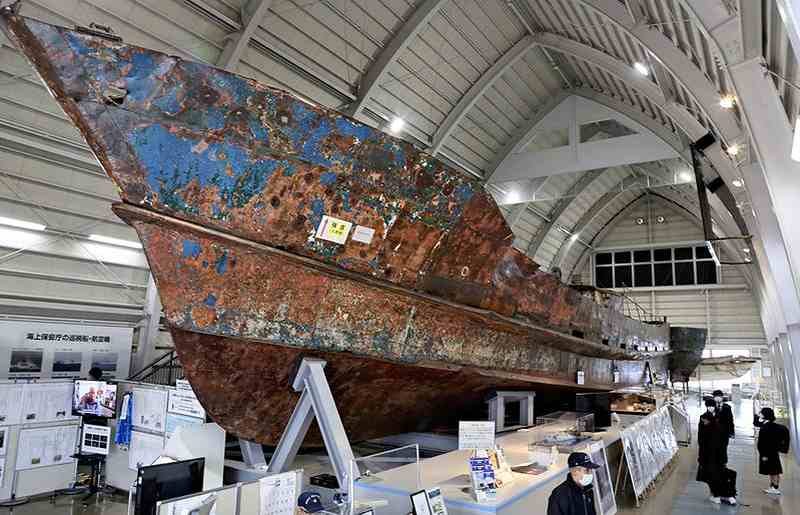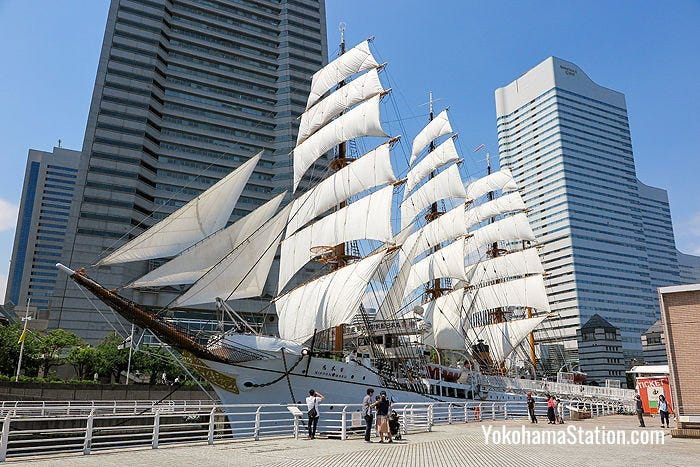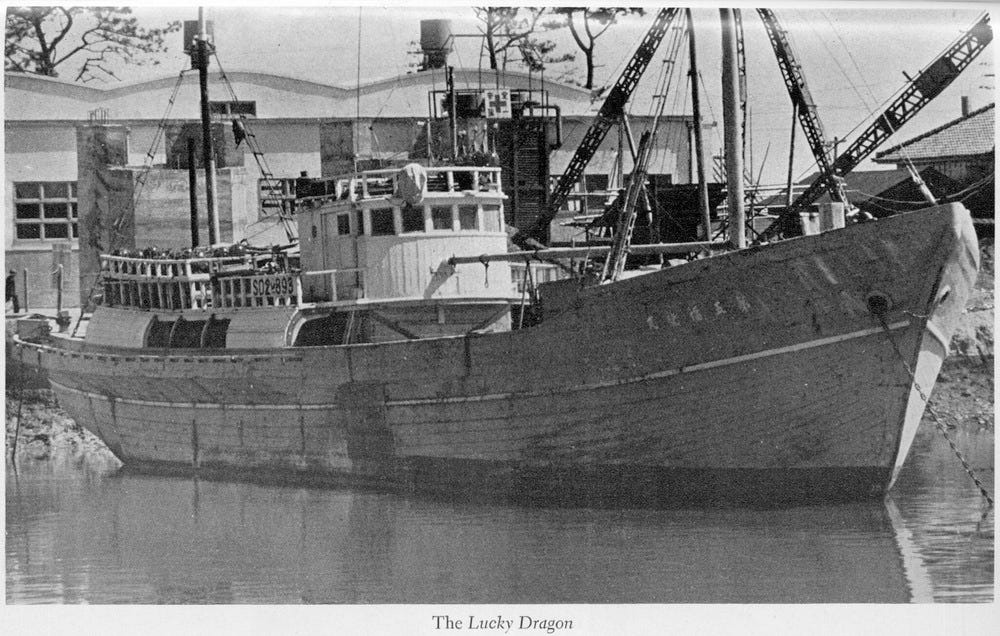The first ship is in Yokohama next to the harbor. It had carried five North Korean spies, disguised as a fishing boat. The Japanese Coast Guard figured out the ruse and machine gunned the ship, leaving big bullet holes in the hull. The spies scuttled the ship and all died, possibly by suicide, so we don't know what they were up to. The Coast Guard raised the ship to investigate. It was filled with underwater gear. Drug smuggling is suspected. The Coast Guard were so proud of this victory they built a building to house the ship and put it on display.
Also in Yokohama is a sailing ship that the Navy made in about 1928 for training. A sailing ship requires a lot more teamwork, men hauling on ropes together and so forth. Old time sailors would sing sea shanties to coordinate their work -- things go better if everyone pulls at exactly the same time. So it was a team building exercise. Or at least that was the excuse. Wooden sailing ships are much more beautiful and fun than diesel, though like most modern sailing ships it has an engine for backup. Maybe sailing ships will make a comeback, but not soon. Inside everything is packed together in the most efficient way so it was amazing how big it seems. When you get back outside you think, how did they fit all that in there.
Once a month volunteers unfurl and rig all the sails in order to dry them out and prevent mildew.
The third ship is housed in Tokyo next to the bay. It's a famous wooden fishing boat that unknowingly sailed under the fallout from the Bikini atoll thermonuclear explosion. The scientist had miscalculated so the explosion was three times more powerful than expected. The fallout fell on the ship like snow. The crew had to be hospitalized for six months and one died. The thing that impressed me most was its size. Fishing boats don't seem that big but when they are out of the water you see their true extent looming above you. Being made of planks makes it even more impressive. The ship continued to fish for many years then was scuttled and abandoned. The Japanese raised the Lucky Dragon and saved it as a memorial.
Some say that this incident inspired Toho's Godzilla movies. Toho wanted to take advantage of the J national anger over this. (The Godzilla roar is done by covering a rag with rosin for maximum friction then running the rag down a string of a bass viol.) Surely Toho didn't expect G to become a big and lasting star, but they'll take it. Recently Godzilla was appointed a cultural ambassador of Japan. Every night her image is projected onto one of the skyscrapers of the administration of Tokyo, destroying the building with her nuclear ray after overwhelming a valiant defense.
Next to the ship is a memorial to the tuna fish that they caught. When the ship docked at first no one knew what had happened or why they were sick so the radioactive fish was sold. The poisonous tuna had to be tracked down in markets across the country, confiscated, and buried.







